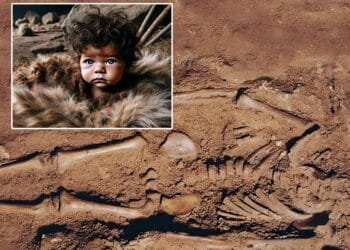Researchers from the Tanbaly Reserve Museum in the Almaty Region of Kazakhstan have unearthed a rare type of coin during ongoing excavations in the Kogaly Valley. This find marks the first time such a coin has been discovered in Kazakhstan, as confirmed by the Ministry of Culture and Information of Kazakhstan.

The coin, which dates back to the mid-seventh century, is a significant artifact from the era of the Western Turks who inhabited the lands of Zhetisu, including the Semirechye region, from the seventh to eighth centuries. This era is crucial to understanding the historical and cultural dynamics of Central Asia.
The Turko-Sughd coinage, named after the Turkic rulers who issued them with Sogdian inscriptions, represents a fascinating intersection of cultures. The Western Turkic khanate, which spanned parts of modern-day Kazakhstan, Uzbekistan, and Kyrgyzstan, issued these coins between the sixth and eighth centuries CE. Previous excavations in regions such as Čāč, Čaḡāniān, and Otrār have uncovered various Turko-Sogdian coins, increasing the known number significantly in recent decades. However, this is the first instance of such a coin being discovered within Kazakhstan’s borders.
Sogdia, also known as Sogdiana, was an ancient Iranian civilization located in what are now Uzbekistan, Turkmenistan, Tajikistan, Kazakhstan, and Kyrgyzstan. The Sogdian language, an Eastern Iranian tongue, was predominantly spoken in the Central Asian region of Sogdia.

These coins often feature inscriptions not only in Sogdian but also in Bactrian, the language of Farghana, and even Arabic. The diversity of languages on the coinage underscores the extensive cultural and political interactions within the region during this period.
The discovery was made by the International Historical and Archaeological Expedition, a collaborative effort to explore and document the historical artifacts of the Kogaly Valley. The site, rich in historical significance, has previously yielded over 6,100 rock engravings, attributed to various periods, including more than 800 from the ancient Turkic period. These engravings were documented by archaeologists Luc Hermann and Boris Zheleznyakov.
The first conservation efforts for the newly discovered coin are being undertaken at the Tanbaly Science and Restoration Laboratory. This laboratory is renowned for its expertise in preserving historical artifacts, ensuring that the coin will be meticulously cared for and studied in detail.

The Tanbaly region itself holds immense archaeological importance. Discovered in 1957 by an archaeological team led by Anna Georgievna Maksimova, the Tanbaly petroglyphs were the first monument of rock art in Central Asia to be recognized as a World Heritage Site in 2004.



























